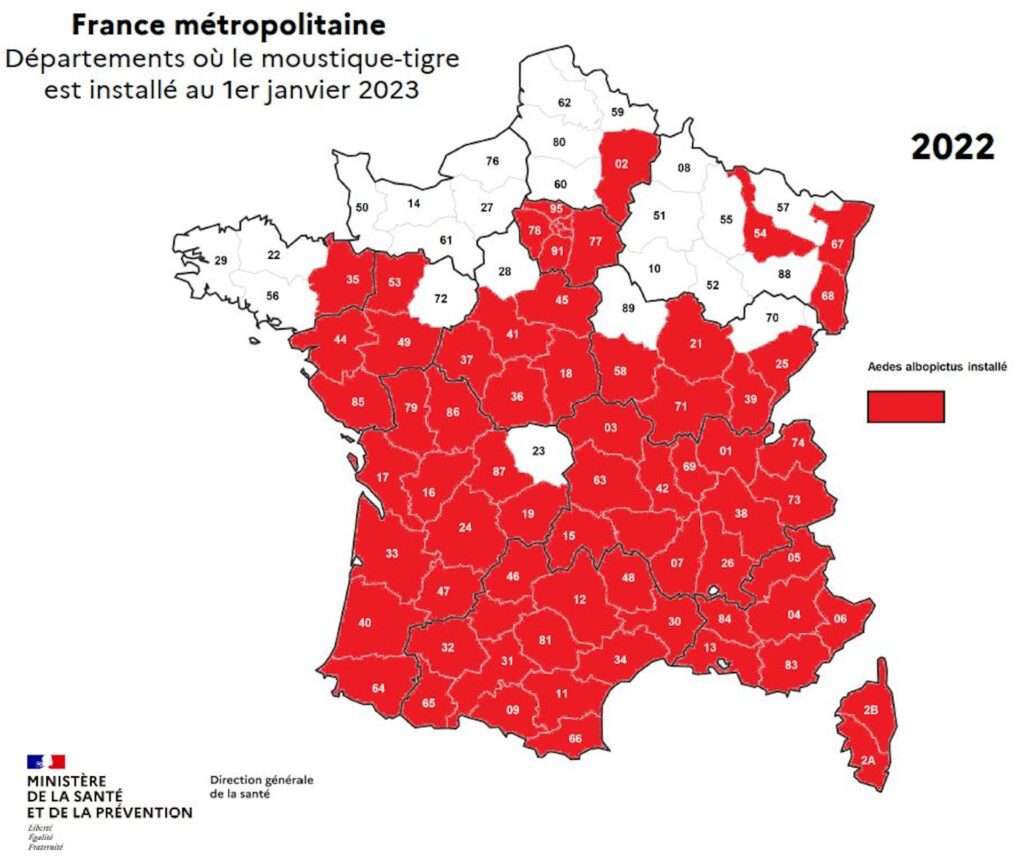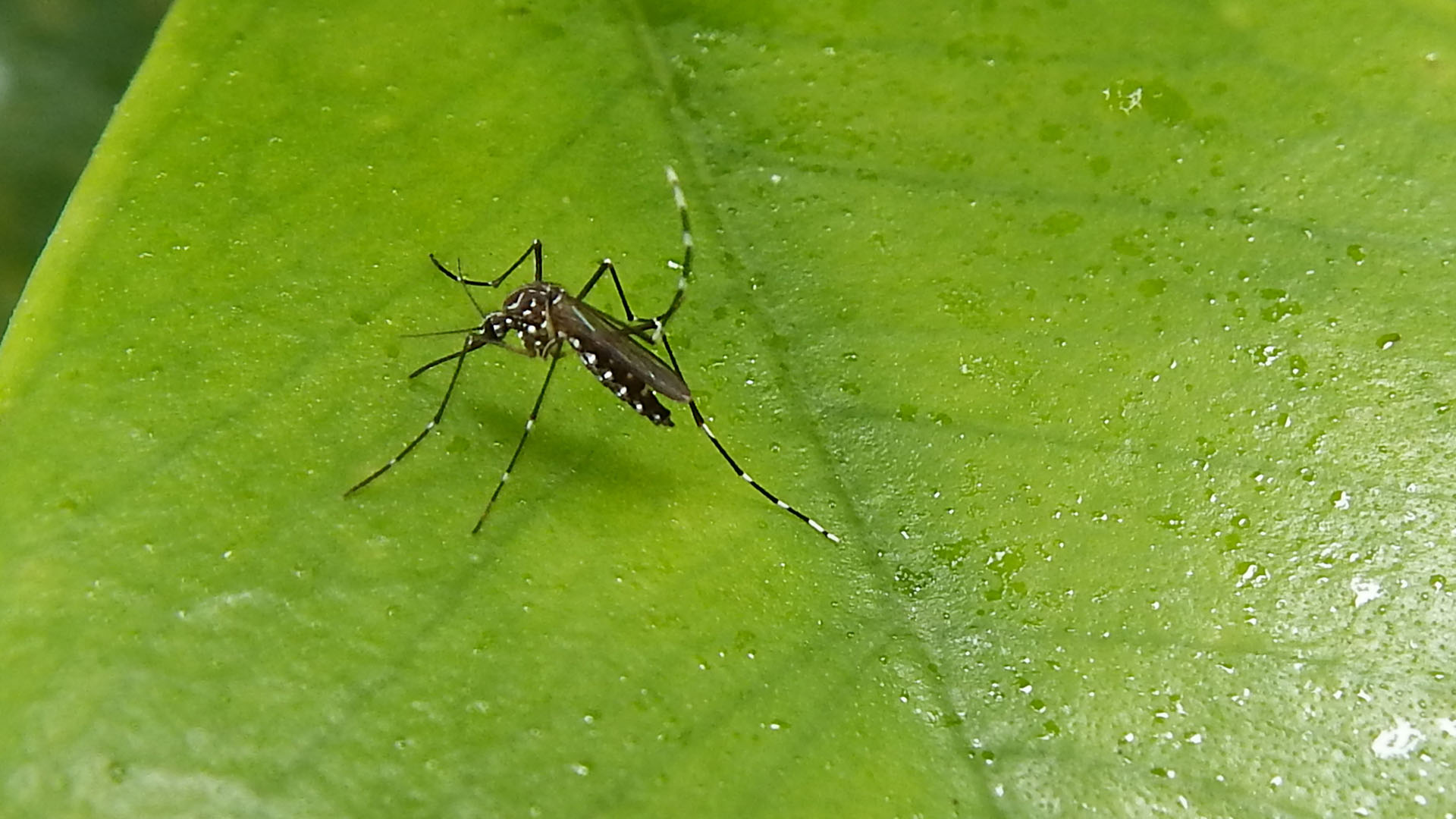Metropolitan France must also deal with dengue fever. A few dozen cases were identified in 2022, much more than the usual contaminations. What will be the scenario for 2023?
In the opinion of all the specialists, the year 2022 was exceptional in metropolitan France on the front of the circulation of arboviruses, these viruses transmitted by arthropods feeding on blood, such as ticks or mosquitoes.
Is this year a harbinger of what awaits us in the future? Or is it rather an anomaly for our country, which is usually very unfamiliar with these viruses, rather considered “exotic”?
A record year 2022 for France
Go back. 2022, in the middle of summer, a first “indigenous” case of dengue transmission is reported in France. This adjective qualifies an infection detected on national territory, without the patient having traveled to a contaminated area before. Unlike cases “imported” from abroad, this means that the virus is circulating in the country.
This was then not very surprising: dengue fever, the most widespread arboviral disease in the world, which affects 100 to 400 million people each year, has already been responsible for indigenous cases in recent years in metropolitan France. The virus had been detected in particular in the Alpes-Maritimes, Var, Bouches-du-Rhône, Hérault and even Gard, totaling around thirty cases since 2010. Not really anything to worry about initially, therefore.
But now, 2022 did not go as planned, and the indigenous cases followed one another. Nine episodes of autochthonous transmission of dengue have been recorded, totaling 66 cases in total, in the Occitanie (12 cases), Provence-Alpes-Côte d’Azur (52 cases) and Corsica (two cases) regions. In addition, the virus has affected new departments in which no case of dengue fever had ever been identified, such as Haute-Garonne, Hautes-Pyrénées or Pyrénées-Orientales.
66 autochthonous cases may not seem like a lot, but this represents, in a single year, more than double the cases listed in 12 years, since the first case of autochthonous dengue fever identified in France in 2010 in the Alpes-Maritimes.
However, dengue is a disease that should not be taken lightly.
A potentially serious illness
If dengue fever is asymptomatic in a large proportion of cases (in 50% to 90%, depending on the studies), it can nevertheless result, in approximately 1% of cases, in a potentially fatal form: so-called “hemorrhagic” dengue fever, which is accompanied by multiple bleeding, in particular gastrointestinal, cutaneous and cerebral.
In other symptomatic people, the disease is mainly manifested by symptoms quite similar to those of the flu: fever, headache, muscle pain… It is estimated that each year, 500,000 people are hospitalized worldwide for serious forms of the disease, which lead to 10,000 to 15,000 deaths. Beyond this cost in human lives, the management of the disease has a certain cost for the community.
Limiting the number of cases is important, because the disease risks spreading with each mosquito bite.
What are the ways to fight dengue fever?
When a vector mosquito bites an infected host, the virus multiplies in its organism. On the next bite, it will pass into another person’s blood, where it can be picked up by another mosquito, and so on.
The best way to limit the spread of a focus of infection is therefore to fight against the main vector of this virus: namely Aedes albopictusbetter known as the tiger mosquito.
A very complicated task, because the range of this mosquito has continued to expand in France in recent years, which significantly increases the number of departments at risk.
Each outbreak identified involves the establishment of a heavy enough infrastructure to break the cycle of circulation of viruses in the human population: mosquito control operations near the detected cases (in order to eliminate adult mosquitoes as well as their larvae), awareness-raising actions with the public and health professionals, door-to-door surveys carried out in collaboration with the Regional Health Agencies (ARS), Public Health France and mosquito control agencies (Altopictus or the Interdepartmental Mosquito Control Agreement). ation).

What scenarios against dengue for the years to come?
It is very difficult to anticipate the circulation of arboviruses, because their transmission cycle is influenced by multiple parameters.
It is therefore difficult to know whether 2023 and the following years will be of the same barrel, or worse, than 2022. It is also difficult to predict which arbovirosis, between dengue fever, Zika, or chikungunya, will take center stage. Since dengue fever is the most prevalent arbovirosis on the surface of the globe, the probability is nevertheless strong to observe more and more cases of this disease in mainland France in the years to come.
Only one thing is certain: it is now clearly established that we should expect an increase in cases of arboviral transmission in mainland France over the coming summers. Especially since the exceptional situation observed in France last year is not an isolated case at the global level.
In the Americas, 2.8 million dengue cases were identified in 2022, which is more than double the cases reported in 2021. And 2023 is already synonymous, for some countries, with an unprecedented dengue epidemic: Peru is the victim of the most intense wave since the reappearance of this disease in the country in 1990.
Another worrying indicator, the World Health Organization is preparing for the likelihood that the El Niño phenomenon, predicted for the years 2023 and 2024, could increase the transmission not only of dengue fever, but also of other arboviruses.
Finally, climate change will also impact the proliferation of mosquito vectors of these diseases, by extending the period of activity of mosquitoes, the peak of which currently extends from May to September. In addition, high temperatures promote the multiplication of viruses in mosquitoes and therefore their transmission.

Surveillance networks at the limit of their capacities
Although constituting an absolute record, the number of dengue fever cases recorded in 2022 therefore probably remains very limited compared to what we should expect in the years to come. In addition, France will host major sporting events in the coming years, including the Olympic Games in 2024, which could contribute to strengthening the dynamics of the circulation of arboviruses…
Faced with the emergence of these arboviral diseases, France has set up active surveillance networks. They bring together experts with different skills (veterinarians, clinicians, entomologists, researchers) who all participate in better understanding these viruses.
The explosion of cases last year has however put them under severe strain locally, as have the mosquito control networks, which are operating at the limit of their capacity. This situation highlights the need to invest more in these areas. It is today that we must prepare ourselves in order to be able to best control future epidemics. In this sense, 2022 is a warning that we must all take seriously…

Yannick Simonin, Virologist specialist in surveillance and study of emerging viral diseases. University Professor, Montpellier University
This article is republished from The Conversation under a Creative Commons license. Read the original article.
If you liked this article, you will like the following ones: do not miss them by subscribing to Numerama on Google News.
